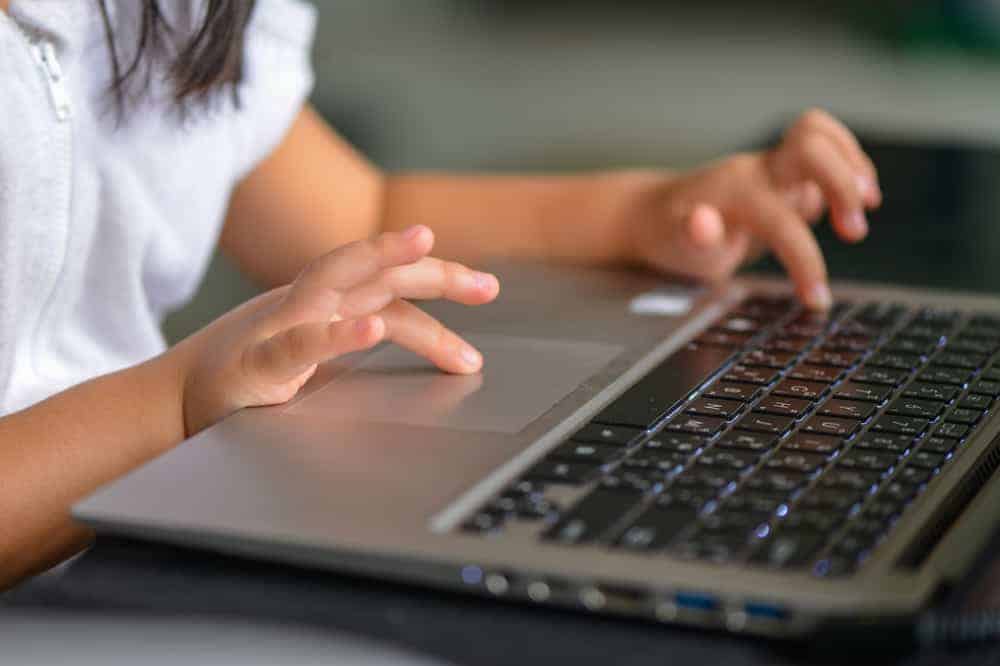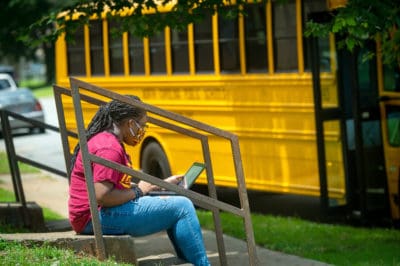

Since the pandemic led to the sudden closure of the nation’s school buildings, K-12 educators have made heroic efforts to provide students with continued learning opportunities and connections with their teachers and classmates. The resulting dramatic increase in online learning has spotlighted the longstanding equity issue of the digital divide. Many students’ homes do not have the computing devices and internet access required for them to benefit from the online opportunities their schools have scrambled to provide.
In recent years, K-12 schools have made great progress in acquiring computers, tablets, and other digital devices, along with the in-school broadband internet access required to use these technologies to enhance teaching and learning. As technology became more central to students’ work, schools recognized that those without home access are left at an unfair disadvantage, one which becomes increasingly critical as students advance to the higher grades. This equity issue has been compounded by the change to fully online learning while schools are closed and the expectation that online learning will continue to be used extensively when they reopen to help meet social distancing and other requirements.
An estimated 12 million K-12 students live in homes that lack internet access — more than 20% of the country’s 55 million students. Schools report that many additional students are limited in their use of online learning because they share a single device, slow and unreliable internet access, or restricted data plans with other family members. Students in economically disadvantaged homes, from traditionally underserved groups, and from rural communities are much more likely to be left offline than their more privileged peers, in what FCC Commissioner Jessica Rosenworcel has labelled the “homework gap.” Some teachers also lack adequate internet access to conduct online teaching.
Prior to the pandemic, schools in many communities made efforts to help address this inequity, working within their limited available resources. One-to-one programs in which every student is provided with a laptop or tablet have become widespread, although are far from reaching all students. Many schools have kept buildings or parking lots open after school hours to provide internet access. Others have made arrangements with local libraries, churches, community organizations, and businesses (ranging from fast food restaurants to barber shops) to provide technology access for students to do their homework. Many students would visit relatives’ and friends’ homes where internet access is available to complete their schoolwork. Some districts even outfitted school buses as internet hot spots and parked them after school in central locations to help fill the homework gap.
With the impact of the pandemic, these sources of internet access became unavailable to students, while the need for frequent access became even more essential. In response, some schools have been able to provide students with laptops or tablets and have worked with public and private sector partners to obtain mobile hot spots that enable students to access the internet from home. Despite these dedicated efforts, many students have continued to be left offline, unable to participate in online learning.
While a critical issue for K-12 education, the lack of home internet access impacts far more. Members of families without internet access are limited in so many ways, such as:
- They cannot participate in higher education online courses, which continue to gain increased use;
- They are unable to seek and apply for jobs online and do not have access to online workforce preparation programs that are critical to help many of the recent unemployment qualify for new jobs;
- They cannot access health information and services, in which there has been growing trend toward telemedicine and online counseling;
- They cannot access many government services, in which the internet is used for everything from renewing drivers’ licenses to applying for unemployment insurance;
- They are limited in their abilities to complete financial transactions, shop from home, search for housing, access news and entertainment, and simply stay in touch with family and friends, both while homebound by the pandemic and thereafter.
Reliable internet access is essential for people of almost every age and life situation. Despite this fact, there is a widespread expectation that schools have the primary responsibility to provide students with home internet access that is often used by other family members also.
Since all sectors of education, business, and government have a vested interest in everyone they serve having internet access, why should the burden of achieving digital equity fall primarily upon the K-12 schools? Addressing digital equity calls for a concerted cross-sector effort, with leadership from states, expanded financial support at the national level, and the involvement of all sectors of education, business, philanthropy, and government.




